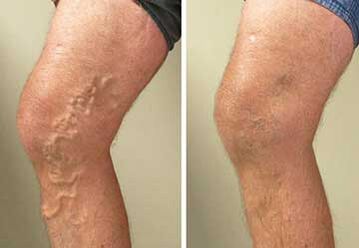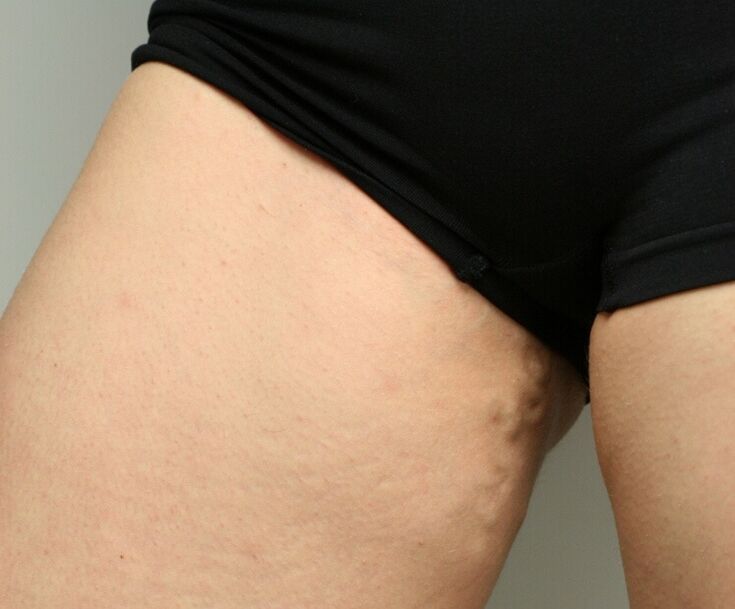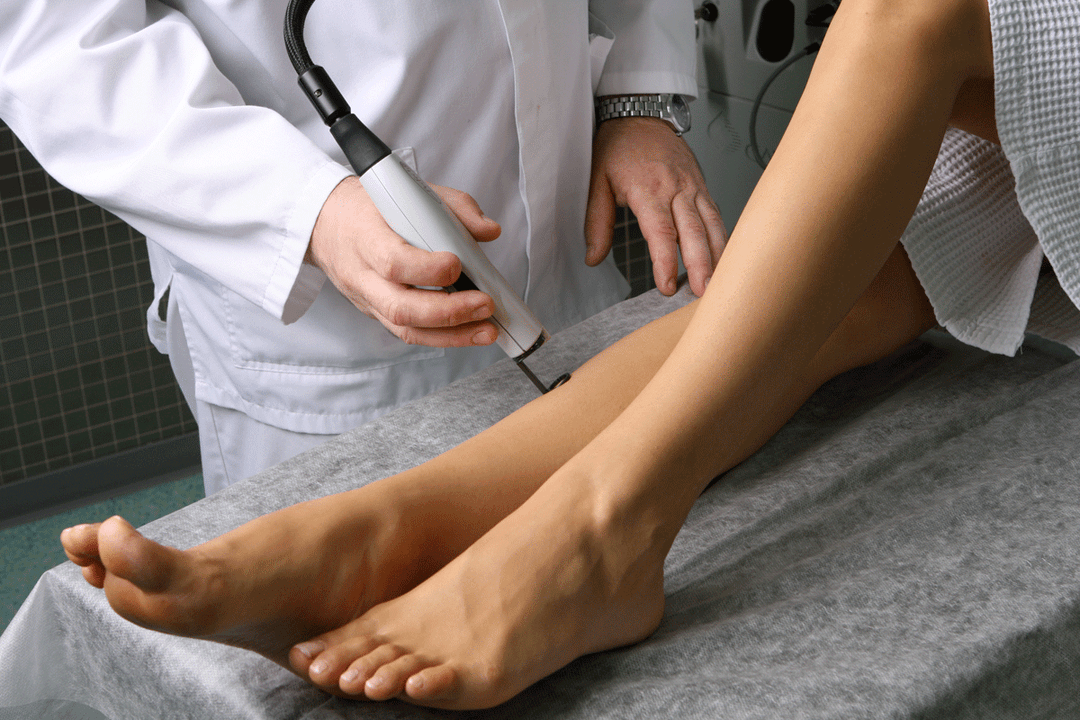In the human body, to provide any part of the oxygen body and the nutrients necessary for the proper course of metabolic processes, a network of blood vessels is provided: arteries and veins. Oxygen saturated blood flows through the arteries and blood with processing products flows through the veins: carbon dioxide and metabolic process residues, which need to be transmitted to organs to remove them from the body. But if the blood flow rate is quite high along the arteries, the bloodstream decreases the veins and the blood contained in them, overcomes the force of gravitational attraction, returning to the heart. So that there is no mechanical output of blood in the veins, valves are provided, which open only in one direction. After closing them, the blood cannot flow. But for various reasons these valves lose their elasticity, elasticity and do not close, which allows part of the blood in the veins to descend and accumulate in the veins at a larger volume than supplied with physiological laws.

This excess blood volume causes the expansion of the veins and causes a change in the wall of the blood vessels - the pockets are formed where stagnant blood is collected. All this pathological process is called - varicious disease or varicose veins. More often, varicose veins are manifested in the legs, since a larger volume of venous blood is collected here, but not rarely manifested in the hands. What contributes to this?
Causes of varicose veins
For the development of any disease, there must be predisposing and provocative factors. The first includes:
- The heredity of the transmission of the non -viability of the circulatory system structure, in particular the valve device,
- congenital changes in the vessels,
- Violations of metabolic processes, leading to vessel wall thinning and loss of elasticity (diabetes mellitus, violation of thyroid gland function and adrenal glands),
- Age changes in the walls of the vessels.
Provocative factors:
- A sedentary lifestyle, there is no necessary muscle work to contract and mechanically push blood through the vessels,
- Long ending in the legs during the day (teachers, hairdressers, behind the machine in factories, etc. ),
- Overweight body weight,
- Pregnancy (metabolism changes and leg load increases, and intravascular pressure increases during delivery),
- Long and frequent physical exertion with lifting weights (stems, engines),
- lesions of the limb muscles or blood vessels,
- The toxic effect of nicotine, alcohol, chemicals, drugs.
Clinical manifestations of varicose veins in the arms and legs
- It all starts with complaints of fatigue on your legs or hands, your quick fatigue, a sense of gravity and numbness in them first appears first at the end of the business day and then constantly.
- Swelling, the swelling appears, more often observed in the legs at night.
- Extended vessels become noticeable, first with physical effort and stress, and then visible at rest, the called vascular stars.
- Confusion (cones) appears along the vase, increasing in volume during physical exertion or cough, sneezing (with an increase in intra -air pressure).

Varicose veins of the veins of the pelvis
It is characterized by long -term pain pain in the pelvis, abundant discharge of the vagina, painful sexual acts, rapid urinary attachment is. A re -gate and childbirth, pelvis and uterus tumors are a provocative factor that mechanically squeezes the veins, an increase in intra -ahabdominal pressure. The pain can be given to any part of the abdomen, but more often in the groin and sacred.
Expansion of the veins of intra -abdominal space
The most dangerous expansion of the liver veins (portal veins) and the esophagus. They are expanded less often, but are dangerous to health for possible bleeding, which means the difficulty of providing health care in this case.
Dangerous complications of varicious disease
- Venous blood stagnates in the veins and does not undergo harmful substances and toxins in time, which means that the body is constantly undergoing self -reflection, which exacerbates even more metabolic disorders and intoxication.
- In knots or pockets of blood vessels, the volume of accumulates, blood cells (platelets) are glued and a thrombus is formed. It can close the lumen of the same vessel and can reach the vessels of the lungs, heart, brain with blood flow and cause a violation of the manifest blood supply:
- acute pulmonary artery thromboembolism (violation of the respiratory that leads to the patient's death),
- A stroke that can have a different nature from a violation of functions (from slight limb paresis to a deep deficiency and even a fatal result),
- myocardial and light infarction,
- Blood vessel thrombosis, which leads to blindness.
Varicose veins
The first is the stage of complaints when there are no visible signs of vascular damage:
- convulsive tightening of the rear surface muscles of the legs, brushes and shoulder;
- Night pain in them;
- Swelling of the feet and hands after physical exertion and if you especially lower your hand or leg and hold for a long time without movement, convenient shoes in the morning begin to cause leg discomfort.
The second - the pain becomes more persistent in intensity, longer, "vascular stars" appear, the swelling of the feet, which may not pass during sleep until morning. There are restrictions during work, the need for short term rest.
Third pain and numbness intensify, they assume a constant character, more burning at night, during sleep is difficult for a person to find a convenient position. Pronounced visual changes of the skin appear - the dryness of the skin is improved, the tendency to cracks, the veins are remarkably expanded, the nodules appear. The night rest does not give relief of good -ser. For long ulcers that do not rapidly heal, in the late period, inflammation in them joins the thrombophlebitis.
Vein expansion diagnosis
- Evaluate the patient's complaints correctly.
- An ultrasound examination through the abdominal wall or through the vagina for pelvis pain - the presence of folds in lot and the expansion of the lumen will be noticeable.
- Dopplerography allows you to estimate the speed of blood flow through the veins.
In heavy and not quite understandable cases, surgeons resort to laparoscopy.

Varicose veins
It is not drug treatment - to normalize the right lifestyle to maintain body weight in relation to age, take a break at work and be able to walk, not limit fluid intake. For the rest, give your legs a high position. Wear underwear of compaction, if necessary (socks, golf). Massage courses, exercise therapy, SPA treatment.
Drug Treatment - Taking medications especially in tablets or use ointments locally in the form of applications and compresses
Surgical treatment - intended to remove the damaged vein or its plastic.
How to prevent the development of varicose veins
- People who are at risk (drivers, hairdressers, seamstresses, surgeons, heavy workers) should carefully listen to changes in the body, while observing and evaluating pain syndrome and not nullifying everything for general fatigue.
- Try to exclude the long -term forced positions of the body - to sit with an abandoned foot in another knee, sitting "in squat". Change body position more often.
- During the day, to perform a small hot -up (walk, tilt your body back and forth, crouching) so that this will allow the limbs muscles to mechanically pump the blood vessels. Run a little or jump on the spot.
- Follow and perform weight correction, especially in adulthood, when the blood flow rate tends to decrease.
- Do not use things that tighten the body, delete the delay in the linen.
- Change heel height during the day, high to bottom. Preference to jumps 2 to 5, 5 cm high.
- Be sure to walk barefoot in artificial gravel (rugs with needles, imitation shells).
- Healthy diet with high vitamin C content (vegetables, sauerkraut, berries).
- Exclude bad habits.
- Massage courses or lymphatic drainage sessions.
- Involve yourself in swimming if there is no against -indications (herniated disc) -Scandinava walk.
ATTENTION: Varicose veins are progressive, not subject to healing and is quite dangerous with its complications. You always need to remember this and take action for prevention from an early age and not neglect them when there is later. Taking care of leg health is a concern for a healthy age.


















